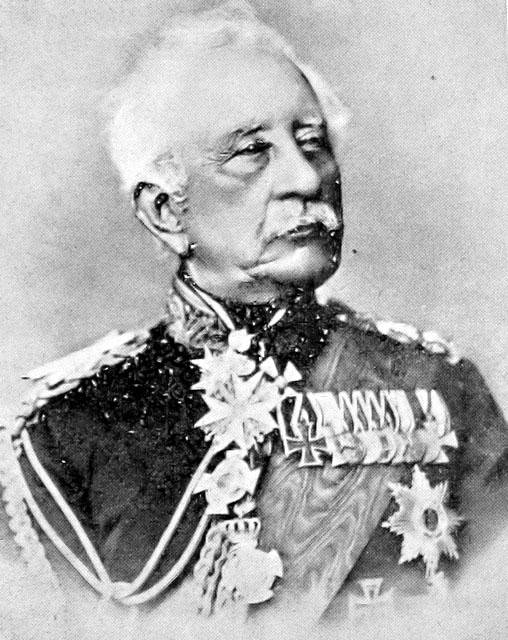A recent Friday evening game provided an opportunity to deploy my Franco-Prussian War miniatures for another fictional encounter. This time the game was set slightly earlier as the frontier battles were unfolding. It found two corps drawn from the Prussian First Army. Unfortunately other commitments have meant I have not had time to write a game report so this week I will explore the game from a different perspective.

There is no doubt that the French suffered from command problems during the war, no less so than in the frontier battles. But the Prussians also suffered challenges in command, in part due to some of their commanders.
One such was Karl Friedrich von Steinmetz who has provided a degree of interest to me over the years. At the time of the Franco-Prussian War he commanded the Prussian First Army, which comprised three corps. In the early stages of the war his First Army was engaged at the Battles of Spicheren, Borney-Colombey and Gravelotte, two of which are available as scenarios on my Volley & Bayonet website. One of my poignant memories of my visit to the battlefield of Gravelotte was the German regimental markers that littered the battlefield in the area of the Mance Ravine where Steinmetz launched a series of bloody attacks.
Born in December 1796 in Pomerania, Steinmetz began his education at a cadet school in 1807. By 1813 he was appointed to the rank of second lieutenant and was actively involved in the fighting including that at Leipzig. By 1839 he held the rank of major. In the First Schleswig War of 1848 he was engaged at the battles of Schleswig and Duppel, which resulted in him adding the Pour le Merite (Blue Max) to his existing Iron Cross. In 1854, after 41 years of active service, he became a major-general. By 1864 as general of infantry he commanded the V Corps in the Austro-Prussian War of 1866. His first victory in the campaign was at the Battle of Nachod, where he was considered to have displayed skillful leadership. Further battles followed and by 1870 he was commanding one of the three Prussian armies assembled along the Rhine. By now he was 74 and had been in active service for 57 years in a carrier spanning the Napoleonic Wars to the Franco-Prussian War.

In 1870 his personality would cause considerable command friction. Yet it was at Gravelotte that his actions would have even more significant repercussions. Here he lost his temper and ordered a series of bloody attacks resulting in heavy Prussian casualties. As a result he was relieved of command and posted to where he could do no further damage. Steinmetz is for me, one of the more colourful Prussian commanders.
But what is the relevance to our recent game? Well this week I have posted a scenario for the Battle of Nachod on my Volley & Bayonet website. It was here in the Austro-Prussian War of 1866 that Steinmetz cemented his reputation. It seems fitting given that a week prior he was deployed on my wargames table. You can find my post on the Battle of Nachod here.

An interesting bio Keith. Seems that a lot of Napoleonic veterans hung around a bit too long in the upper echelons of their respective armed forces.
I find it easy to forget how frequently major wars have occurred in reasonably short time frames, resulting in officers fighting in several wars. I was today looking at officers that served in WWII, Korea and Vietnam for example. However, this is indeed an extended period of active service.